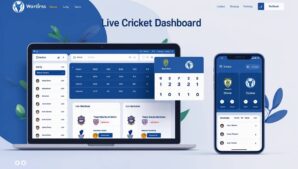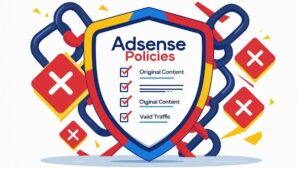Monetizing a website requires choosing the right ad network. Google AdSense dominates the market, but alternatives like Media.net, Ezoic, and Adsterra offer unique advantages. This analysis compares AdSense with other networks to determine which aligns with your traffic, niche, and revenue goals.
Understanding Ad Networks
Ad networks act as intermediaries between advertisers and publishers. They deliver targeted ads to websites, ensuring revenue for publishers and ROI for advertisers. The choice of network impacts earnings, user experience, and scalability.
Google AdSense: Features and Limitations
Google AdSense remains the most recognized ad network. Its integration with Google’s ecosystem provides access to high-paying advertisers.
Pros:
- Global Reach: Access to millions of advertisers.
- User-Friendly Interface: Easy integration with WordPress and other platforms.
- Multiple Ad Formats: Display, video, and native ads.
- Reliable Payments: Timely payouts via checks, wire transfers, or Western Union.
Cons:
- Stringent Approval Process: Requires compliant content and consistent traffic.
- Revenue Share: Google retains 32% of ad spend.
- Limited Control: Publishers cannot negotiate rates directly.
For new publishers, understanding how to get AdSense approval is critical.
Comparison of Top Ad Networks
The table below highlights key differences between AdSense and competitors:
| Feature | AdSense | Media.net | Ezoic | Adsterra |
|---|---|---|---|---|
| Minimum Traffic | Moderate | Low | High | None |
| Payment Threshold | $100 | $100 | $20 | $5 |
| Ad Formats | Display, Video | Native, Display | AI-Optimized Ads | Pop-Unders, Push |
| Revenue Model | CPC, CPM | CPC, CPM | CPM, Hybrid | CPM, CPA |
| Approval Difficulty | High | Moderate | Moderate | Low |
Top AdSense Alternatives
1. Media.net
Powered by Yahoo and Bing, Media.net specializes in contextual ads. It’s ideal for content-heavy sites in niches like finance or tech.
- Pros: High RPM for US traffic, responsive customer support.
- Cons: Limited ad format diversity.
Learn how Media.net complements SEO strategies for content monetization.
2. Ezoic
Ezoic uses AI to test ad placements, maximizing revenue without compromising user experience.
- Pros: Data-driven optimization, access to premium advertisers.
- Cons: Requires 10,000 monthly sessions for eligibility.
3. Adsterra
Adsterra offers pop-unders, push notifications, and direct deals. Its low payment threshold ($5) attracts small publishers.
- Pros: High fill rates, global coverage.
- Cons: Aggressive ad formats may affect UX.
For publishers exploring alternatives, Adsterra’s monetization guide provides actionable insights.
4. Amazon Unified Ad Marketplace (UAM)
Amazon UAM leverages Amazon’s shopper data to deliver personalized ads. Ideal for e-commerce or product review sites.
- Pros: High CPC for Amazon-related keywords.
- Cons: Limited to Amazon-affiliated content.
Factors to Consider When Choosing an Ad Network
Traffic Volume and Quality
AdSense favors sites with steady, organic traffic. Networks like Adsterra accept low-traffic sites but offer lower RPMs.
Niche Relevance
Finance and tech niches perform well on Media.net. Lifestyle blogs may thrive with Ezoic’s AI optimization.
Payment Terms
High thresholds (e.g., AdSense’s $100) delay payouts for small publishers. Adsterra’s $5 threshold ensures faster access to earnings.
User Experience
Intrusive ads (pop-unders, interstitials) from networks like PropellerAds can increase bounce rates. Balance revenue with site speed optimization.
Case Study: AdSense vs. Ezoic
A tech blog with 50,000 monthly sessions tested both networks:
- AdSense: Earned $1,200/month with display ads.
- Ezoic: Generated $1,800/month using AI-optimized placements.
Ezoic’s machine learning improved CTR without affecting page load times, crucial for SEO rankings.
Future Trends in Ad Monetization
- Header Bidding: Networks like Ezoic and Media.net are adopting header bidding to boost competition among advertisers.
- Privacy-Focused Ads: With third-party cookie deprecation, contextual targeting (as used by Media.net) will gain prominence.
Publishers must adapt by leveraging semantic SEO to align content with advertiser demand.
Try Now:
By evaluating traffic, niche, and UX priorities, publishers can select an ad network that maximizes revenue while maintaining audience trust.










